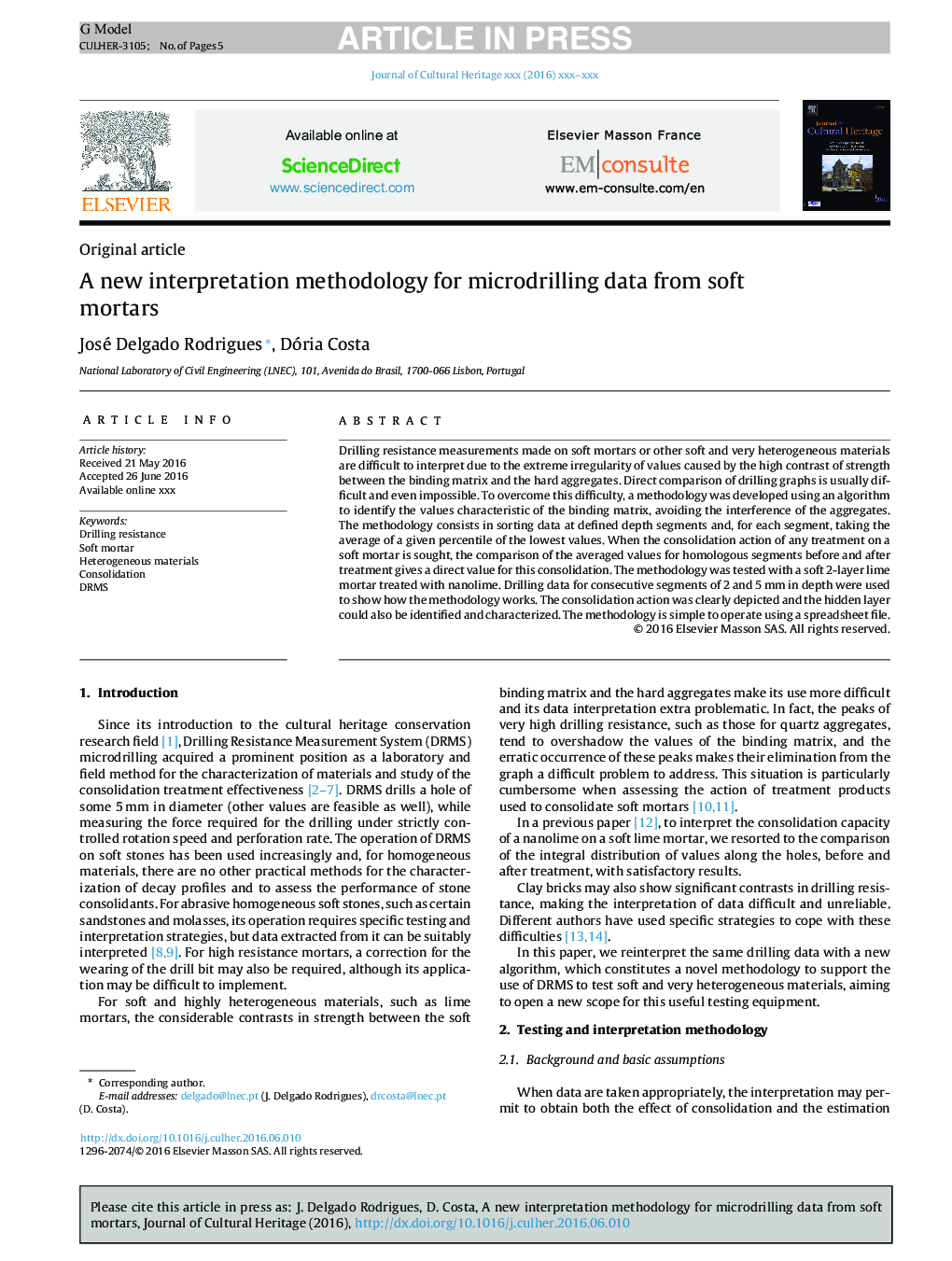| Article ID | Journal | Published Year | Pages | File Type |
|---|---|---|---|---|
| 5112693 | Journal of Cultural Heritage | 2016 | 5 Pages |
Abstract
Drilling resistance measurements made on soft mortars or other soft and very heterogeneous materials are difficult to interpret due to the extreme irregularity of values caused by the high contrast of strength between the binding matrix and the hard aggregates. Direct comparison of drilling graphs is usually difficult and even impossible. To overcome this difficulty, a methodology was developed using an algorithm to identify the values characteristic of the binding matrix, avoiding the interference of the aggregates. The methodology consists in sorting data at defined depth segments and, for each segment, taking the average of a given percentile of the lowest values. When the consolidation action of any treatment on a soft mortar is sought, the comparison of the averaged values for homologous segments before and after treatment gives a direct value for this consolidation. The methodology was tested with a soft 2-layer lime mortar treated with nanolime. Drilling data for consecutive segments of 2 and 5Â mm in depth were used to show how the methodology works. The consolidation action was clearly depicted and the hidden layer could also be identified and characterized. The methodology is simple to operate using a spreadsheet file.
Related Topics
Physical Sciences and Engineering
Chemistry
Physical and Theoretical Chemistry
Authors
José Delgado Rodrigues, Dória Costa,
